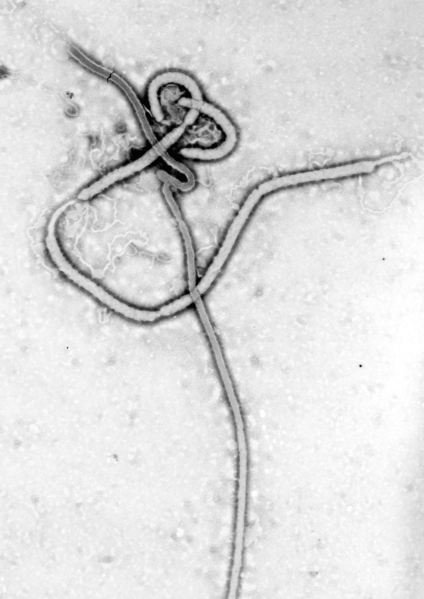Faili:Ebola virus em.png

Ukubwa wa hakikisho: piseli 424 × 599. Ukubwa zingine: piseli 170 × 240 | piseli 340 × 480 | piseli 543 × 768 | piseli 724 × 1,024 | piseli 2,043 × 2,887.
Faili halisi (piseli 2,043 × 2,887, saizi ya faili: 2.55 MB, aina ya MIME: image/png)
Historia ya faili
Bonyeza tarehe/saa kuona faili kama ilivyoonekana wakati huo.
| Tarehe/Saa | Picha ndogo | Vipimo | Mtumiaji | Maelezo | |
|---|---|---|---|---|---|
| sasa hivi | 09:33, 28 Julai 2014 |  | 2,043 × 2,887 (2.55 MB) | Splintercellguy | Upload higher-resolution version |
| 11:22, 24 Mei 2005 |  | 150 × 227 (19 KB) | Knutux | An electron micrograph of an Ebola viral particle showing the characteristic filamentous structure of a Filoviridae. The viral filaments can appear in images in various shapes including a 'u', '6', a coil, or branched resul |
Matumizi ya faili
Ukurasa huu umeunganishwa na faili hili:
Matumizi ya faili ulimwenguni
Wiki nyingine hutumia faili hizi:
- Matumizi kwa af.wikipedia.org
- Matumizi kwa als.wikipedia.org
- Matumizi kwa ar.wikipedia.org
- Matumizi kwa arz.wikipedia.org
- Matumizi kwa ast.wikipedia.org
- Matumizi kwa bn.wikipedia.org
- Matumizi kwa ca.wikipedia.org
- Matumizi kwa ca.wikinews.org
- Matumizi kwa csb.wikipedia.org
- Matumizi kwa da.wikipedia.org
- Matumizi kwa de.wikipedia.org
- Matumizi kwa el.wikipedia.org
- Matumizi kwa en.wikipedia.org
- Wikipedia:Main Page/French
- Wikipedia:WikiProject Viruses/Templates
- Virus
- Wikipedia:Top 25 Report/July 27 to August 2, 2014
- Wikipedia:Top 25 Report/August 3 to 9, 2014
- RVSV-ZEBOV vaccine
- CAd3-ZEBOV
- 2016 in science
- Wikipedia:Top 25 Report/Records
- User:M1Abramstanbks/sandbox
- Wikipedia:In the news/Posted/May 2004
- Matumizi kwa en.wikinews.org
- Matumizi kwa eo.wikipedia.org
- Matumizi kwa eo.wikinews.org
- Matumizi kwa es.wikipedia.org
- Matumizi kwa et.wikipedia.org
- Matumizi kwa eu.wikipedia.org
- Matumizi kwa fi.wikiversity.org
- Matumizi kwa fr.wikipedia.org
- Matumizi kwa fr.wikibooks.org
- Matumizi kwa ga.wikipedia.org
- Matumizi kwa gl.wikipedia.org
Tazama matumizi zaidi ya kimataifa ya faili hii.


